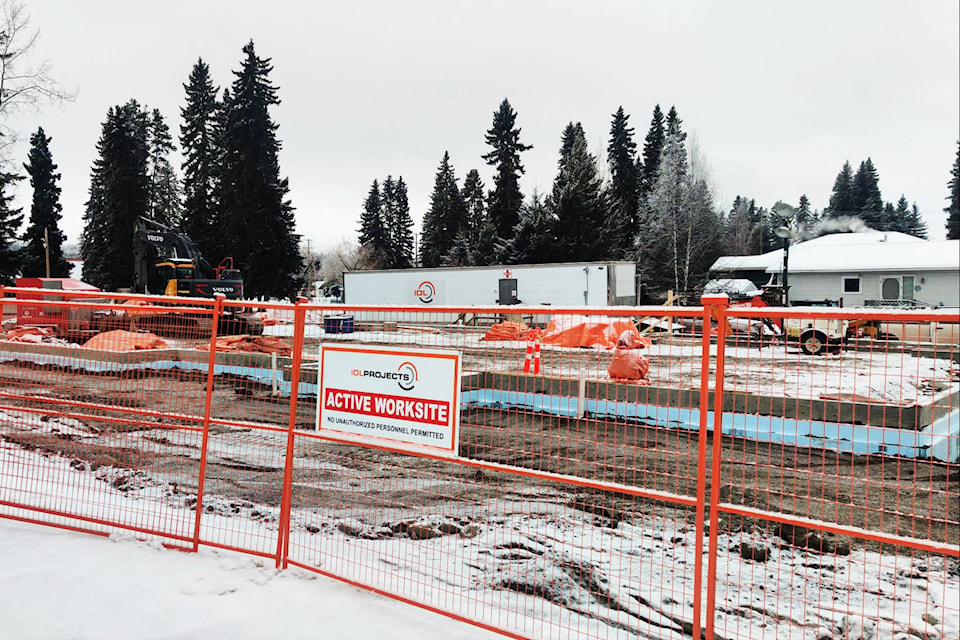The District of Vanderhoof is looking at ways to combat a near zero vacancy rate, and a low number of homes for sale in the region.
Mayor Gerry Thiessen said the district is working hard to attract home builders to the area, along with putting more priority and emphasis on seniors housing projects in the community.
“For the entire town and rural areas I think right now there are maybe eight single family homes for sale,” said Thiessen, a realtor, himself, for 40 years and past president of both the BC Northern Real Estate Board, the BC Real Estate Board and the Canadian Real Estate Association.
“It makes it very, very difficult if somebody’s coming to town and needing a place to stay there just aren’t any options that there should be for somebody coming here. It’s a real hardship on many people in our community trying to expand their businesses or even recruit people in the community.”
A District of Vanderhoof housing needs assessment released in August of 2020 tackled the issue, noting it has a social and practical responsibility to address local housing needs.
READ MORE: Group of 20 actively want to deal with housing crisis in Vanderhoof
The key areas of need included housing availability, affordable housing, rental housing, short-term rentals, special needs, disability and seniors housing, housing for families and shelter for individuals experiencing homelessness and housing for individuals at risk of homelessness.
2020 Housing Needs Assessment Final by WL Tribune on Scribd
Thiessen said while the population has remained fairly steady over the years, he pointed to “population expansion” as a major factor in the community’s housing issues.
Property sales in Northern B.C., meanwhile, were up for 2020, including in Vanderhoof, despite the global novel coronavirus pandemic, according to the BC Northern Real Estate Board.
The area, comprised of the Cariboo, the Northwest, the Bulkley Nechako, the Northern and the Fraser Fort George regions, reported 4,083 property sales worth $1.6 billion in 2020 through the Multiple Listing Service (MLS), up from last year’s 4,748 sales worth $1.5 billion.
In Vanderhoof, 146 properties sold in 2020 worth $42.7 million, compared to 2019’s 120 properties worth $31.3 million.
Of the 60, single-family homes that sold in 2020, half sold for less than $230,000.
In addition, the BCNREB said in a release 26 parcels of vacant land, 32 homes on acreage, one manufactured home in a park and a further 12 manufactured homes on land changed hands in 2020.
As of Dec. 31, 2020, there were 47 properties of all types available through MLS in the Vanderhoof area, compared with 81 properties a year ago.
The average selling price for a single-family residential home in Vanderhoof has consistently dipped, annually, dating back to 2018.
In 2020, the average selling price was $222,560 with 60 units sold, compared to $231,571 with 48 units sold in 2019. In 2018, 55 units sold averaging $238,196.
“I think what that tells you is there were a number of lower-priced homes that did sell because we certainly saw the market value increase year to year,” Thiessen said of the figures. “Houses that were on the market and struggled in 2019 very quickly sold in 2020. Then we saw comparable homes sell for significantly more, just a little bit later.”
Thiessen said he considers the district an affordable place to live, and census data for 2021, once released, will paint a better picture of what the community’s needs are moving forward, especially pending the startup of the Blackwater Gold Project near Lhoosk’uz Dené (Kluskus) Nation and the Ulkatcho First Nation (Anahim Lake).
“It [the mine] could bring stability,” Thiessen said. “If we hit the 7,000, 8,000 [population] mark I think that would attract a lot more investment in the community.”
In 2019, just three new construction permits for a single-family dwelling were issued, up from one the previous year, the district’s housing study showed, noting a district population of 4,439 in 2016, and a Regional District of Bulkley-Nechako population of 37,896, also in 2016. The total number of households reported in 2016 was 1,755 in the district, and 15,100 in the region district that same year.
As one solution to attracting more builders to the community, Thiessen said the district is taking a two-pronged approach.
One is a tax revitalization bylaw created in 2020.
READ MORE: City has options available to fix seniors housing issues: advocate
“As a result we saw a number of investors come to town and invest in the community this past year and use it,” he said, noting the bylaw offers home builders a tax exemption over a five-year period (100 per cent year one, 80 per cent year two, etc.).
Additionally, Thiessen said the district is in communication with organizations in order to secure more seniors housing in the area.
“Our hope is we will see a couple of these senior’s housing projects go ahead — like the one on the go with 18, one-bedroom rooms and nine separate beds for dementia care being built in the centre of Vanderhoof,” he said, noting the hope is seniors currently living in single family homes may move into seniors housing, leaving homes available in the community.
WEB POLL: Are you affected by the housing shortage in Vanderhoof?
greg.sabatino@wltribune.com
Like us on Facebook and follow us on Twitter
